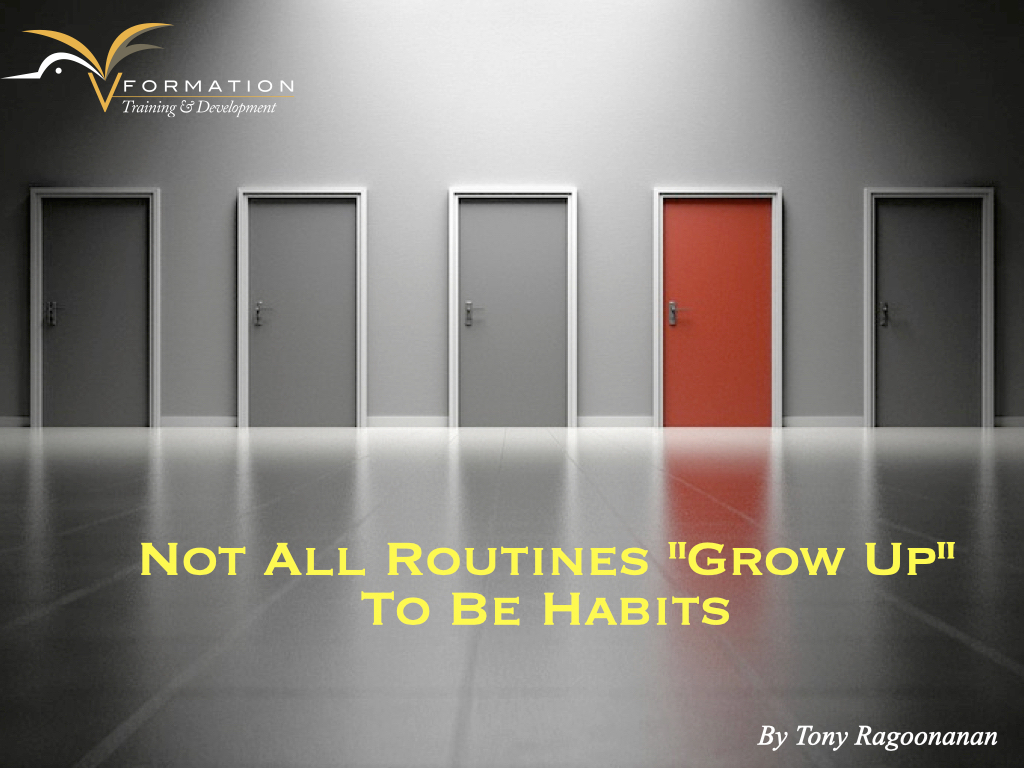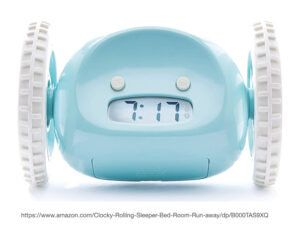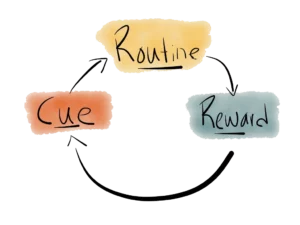
Blog
Not All Routines “Grow Up” To Be Habits
Just over 10 years ago, I came across an interesting product; an alarm clock called “Clocky.” It was developed by graduate student, Gauri Nanda, for an industrial design class at MIT Media Lab. But, this is no ordinary alarm clock. “Clocky” is an alarm clock that you have to chase to turn it off and let me tell you…it moves fast!!
If you ever wanted to create a habit of getting up early or you wanted to avoid the “abuse” of the snooze button, this alarm clock might just be the catalyst you need. Disruptive and uncomfortable? Yes!! But “Clocky” sold out when it first hit the market!! Whether it was because people really wanted to create a new habit or just found it to be a cool invention, who knows?
Change is hard but there are times when we have to be a bit disruptive if we want to create a habit because to create that habit in the first place, we must commit to routine. So it’s really about making that choice.
Whether it’s personal or professional, creating healthy behaviours is no doubt a goal that will serve to increase productivity, consistency, and performance in any environment.
Wouldn’t it be fantastic if you could simply create a habit out of what should be everyday tasks like exercising, eating healthy, or simply practicing a skill? Unfortunately, your expectations would be too high if you were hoping that these types of activities could be put on autopilot. Behaviours that require choice, deliberation, or effort, are not habits because habits are automatic and we, therefore, shouldn’t try to form a habit out of the type of task that can never become one.
Habit formation is a hot topic these days, even in the workplace, and like many, I have read these two amazing books; “Atomic Habits” by James Clear, and “The Power of Habit” by Charles Duhigg. These authors both explain the habit loop:

- Cue: This is a trigger that signals the starting point of your routine and tells your brain to execute a specific routine.
- Routine: You act out the physical, mental, or emotional sequence of behaviour that the cue has prompted.
- Reward: This is the physical or emotional result of your routine.
Picture source: https://jmsbrdy.com/blog/habit-formation-as-analogy-for-machine-learning/
The hardest part, at least when you are trying to kick a habit or form a new one, is obviously to execute the routine right after the cue and this is where choice comes in.
Now, as I mentioned before, not all routines can or will become habits. Some routines will remain as routines or become rituals (I will explain the difference shortly). As long as you can procrastinate about it, it’s not a habit. At least, not yet. Routines, rituals, and habits will, however, all give you a “reward” in some form.
“Habit,” “routine” or “ritual ” are words that we tend to use interchangeably, and even though they are connected, they are a bit different. The difference between a routine and a ritual is the attitude behind the action. While routines are actions to be done continuously—such as making your bed or driving to work—rituals are viewed as more meaningful practices that have a real sense of purpose so there is more motivation behind them. Habits, on the other hand, do not require motivation, but if some routines or rituals eventually become healthy habits … great!! However, the focus must be on first creating ROUTINES, and as we all know, many factors will drive this.
Here are 5 tips (most of which are cues) that can help to develop and maintain routines:
1. Set a time
 Since we cannot depend on routines happening automatically, you must plan what you are going to do and when you are going to do it. Planning an action has been shown to boost the likelihood of follow-through. Even though this seems relatively simple, many still ignore it. Without a dedicated time reserved for your new routine, chances are it will be drastically delayed or you’ll never get done.
Since we cannot depend on routines happening automatically, you must plan what you are going to do and when you are going to do it. Planning an action has been shown to boost the likelihood of follow-through. Even though this seems relatively simple, many still ignore it. Without a dedicated time reserved for your new routine, chances are it will be drastically delayed or you’ll never get done.
2. Adjust or avoid a negative environment
The environment has a way of affecting our behaviour. For example, if dishes are piled up in your sink, your motivation to cook, if you planned on it, will be severely diminished. Places, people (and I’m sure you know some) or situations can all create environments that can affect you at any time. However, please understand that you have the power to choose.
3. Know the triggers
Triggers can affect how we feel at any moment and they could drive a positive or negative habit. If you are aware of the triggers, do not ignore them, just manage them. For example, don’t go grocery shopping when you’re hungry, especially if you have a bad habit of picking up unnecessary items. Additionally, if you want to exercise after work, leaving your gym clothes in the trunk of your car is a useful trigger. This creates an “off-ramp” to make it easier for you to decide to go to the gym. Going home to change means that you will see a refrigerator, a couch, a TV, and a bed….good luck!! 🙂
4. Make a commitment to be consistent
To create something lasting, it needs to first become a regularly performed routine. Again, choice is involved and the points above can support your intention. However given how much effort routines can demand, it can become too easy to skip a difficult task. Breaking the task down into smaller steps will make it a bit easier to commit to the first step as the first step becomes more doable. Committing that first step is an effective way to ensure that you complete the task.
5. Welcome Discomfort
It’s important to note that repeatedly carrying out a new behaviour requires effort. Expect discomfort and know that you’ll have to push through it. Perception is a matter of perspective. What is the story you are telling yourself about the task to be done? Remember that action precedes motivation. Don’t wait for your favorite song to play, don’t wait for your favorite person to show up…just start!!!… the motivation will come.
If you want to start an exercise routine, the exercise session is the routine. The habit is the “showing up” part.
Keep in mind that it’s easy to get sidelined when we decide to take action. The key is to stay focused and keep these points in mind. Speaking to family, friends, and colleagues can provide additional support. In your personal life, ensure that you are taking the right action to create the right routines so you can create the right rituals and habits. Similarly, in the corporate environment, all of these are especially crucial as they help to drive both culture and performance, however, in both scenarios, it is important to note the difference between them so that you can direct your energy in the right places. You will eventually find that the result that fits, is having a combination of them all.
For more information on how you can be supported in this area, please visit here or contact me for more details:

Tony Ragoonanan is the Founder of V-Formation Training & Development. As a Trainer and Performance Management Specialist, he helps individuals and organizations to align emotion, skill, and behaviour with outcomes. Outside of this, it’s all about family, football, and fitness!!
868-681-3492 | tonyr0909@gmail.com




Leave a reply